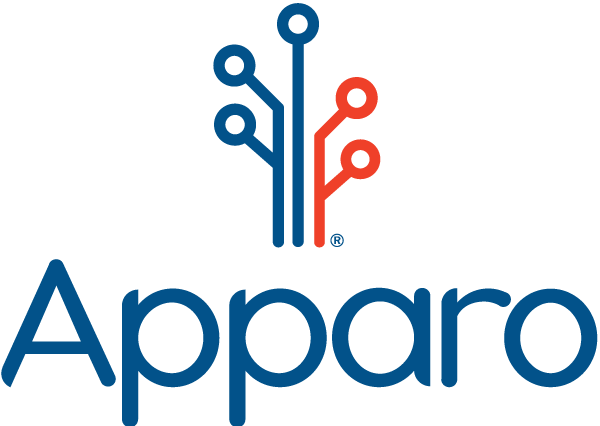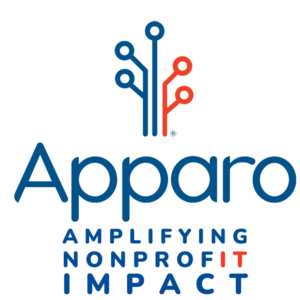Duke Energy and Google skilled volunteers are helping improve the use of technology, including a transition to Google Workspace, for Children’s Theater of Charlotte, so that they can further enrich their audience and student experience.
Children’s Theatre of Charlotte is a nonprofit organization which has served Charlotte for the past 42 years and is dedicated to creating exceptional theatre experiences, inspiring generations to explore the wonder of their world. They enroll more than 2,300 young people in classes and camps, teaching confidence and self-esteem while encouraging creativity and self-expression. Their home is ImaginOn: The Joe & Joan Martin Center, an amazing collaborative venture between the theatre and Charlotte Mecklenburg Library.
They reached out to Apparo seeking a documented and strategic technology plan, including organization transition to Google Workspace. They were matched to volunteers Josh Glassberg of Duke Energy and Paul Happel of Google. The volunteers conducted a technology assessment of the organization’s current infrastructure, operations, security and technology policies through the lens of a transition to a Google Workspace environment and delivered a comprehensive technology plan which identifies gaps and provides recommendations that best aligns and leverages a Google Workspace environment.
Open Project Overview Snapshot in own window
Children’s Theatre of Charlotte is a nonprofit organization which has served Charlotte for the past 42 years and is dedicated to creating exceptional theatre experiences, inspiring generations to explore the wonder of their world. They enroll more than 2,300 young people in classes and camps, teaching confidence and self-esteem while encouraging creativity and self-expression. Their home is ImaginOn: The Joe & Joan Martin Center, an amazing collaborative venture between the theatre and Charlotte Mecklenburg Library.
They reached out to Apparo seeking a documented and strategic technology plan, including organization transition to Google Workspace. They were operating without a documented technology plan, but envisioned a technology landscape that seamlessly enabled and supported their work internally with staff and externally with partners and contractors they often work with. They were matched to volunteers Josh Glassberg of Duke Energy and Paul Happel of Google. The volunteers conducted a technology assessment of the organization’s current infrastructure, operations, security and technology policies through the lens of a transition to a Google Workspace environment and delivered a comprehensive technology plan which identifies gaps and provides recommendations that best aligns and leverages a Google Workspace environment.
At the end of the project, we met with Nao Tsurumaki and Rob Odum to learn more about its significance and expected impact.
Nao shares, “We decided to move to Google Workspace to consolidate and simplify our work internally and with our many outside artists and partners, but we needed more expertise to make the transition, so we turned to Apparo.” They embarked on this project because of the challenges they were facing across the different platform and accounts they were using for their work:
- Losing time jumping from application to application and account to account
- Losing time checking multiple channels for the same communications
- Missing information/communication problems when unsure where to look or forgetting to check multiple channels/locations – Rob explains, “There were voids in information. People didn’t always know where to look to get the information they needed.” Nao adds, “With two channels of communications, you can miss something. Something time sensitive can get lost.”
- Calendaring challenges – Rob explains, “We do a lot of project-based work, with a lot of external parties. We were sharing Outlook calendars for some things, Google for others and had problems with access and permissions.”
Now that the project is complete, they are already experiencing many benefits and look forward to more as the transition is fully adopted by the organization:
- Streamlined internal communications across email/chat/calls/calendars, which will save time and also minimize errors
- Improved external communications and calendaring, which also saves time and minimizes errors
- Empowered manager on staff who can now set up their own organizations systems for projects and shut them down as needed, which saves time for them and also for the tech team
- Enhanced and more secure infrastructure – sufficient internet bandwidth to meet needs, improved wifi and use of authenticator app instead of texting code
- Selected trusted migration partner: Carolina Computer Partners
- Longer term – Cost reduction with elimination of Meraki licensing fees (with eventual move to Ubiquiti access points)
- Potential for increased fundraising – driven by increased effectiveness at external communications, which will help their constituents feel more connected and therefore more likely to donate
Most importantly, these technology and process improvements will help move them along in fulfilling their mission:
- Enriched student experience – Better communications and easier digital access to materials will make students feel more connected and engaged with their teachers, which will help foster their love of the arts over time. “We make that spark and we nurture it. Kids will be more inspired and want to come back,” shares Nao of his hopes for an enhanced experience via Google Classroom.
- Increased ability to grow reach – With well-organized content and better communications with teachers, it will be easier to structure and launch new relationships with more schools and other programs. Nao adds, “Google makes these collaborations easier, so can do more and reach more students.”
Project participants shared their appreciation at the close of the project:
- “I’m not an IT guy, I just play him on TV,” jokes Rob, “But seriously, it’s so great when we can have folks with more expertise and training who know all of the lingo and tech terms. They helped us avoid salespeople just pushing their brand. The project ran very smoothly.”
- Nao Tsurumaki shares, “The best part of working with Apparo was having thought partners who understand more than we do and help us think about how to evaluate our choices. There was a lot of value in having that time together. We don’t have a big IT department; we needed them to tell us, yes, that’s the best for your organization.”
- Josh Glassberg says, “I had a great time. I’m happy to lend my skills. I’m not an artist, but can talk about tech all day. It feels great to make an impact on an organization that I really appreciate. This experience has also strengthened my skill set by giving me space to work with technology that I don’t get to at work. I would be happy to help again in the future.”
- Paul Happel shares, “I love to share my IT skills, especially by volunteering to support a nonprofit because they don’t always have the technology resources for large projects. Through this project I’m also learning about another great nonprofit organization and that’s been very interesting. This is my third project with Apparo and I keep coming back because of the team at Apparo, volunteers, and nonprofits are all so great to work with. We discuss what volunteer role can work based on my time and my skills and that’s wonderful as well. The connections are also really nice with both the nonprofits and the other technology folks I’ve gotten to work and network with.”


